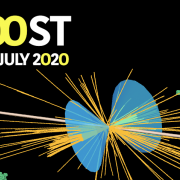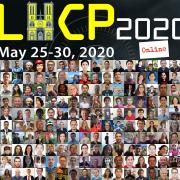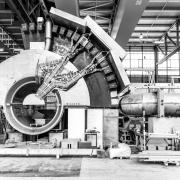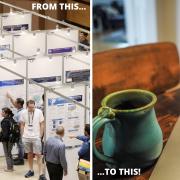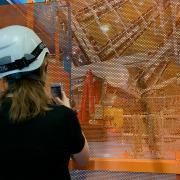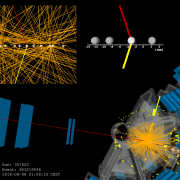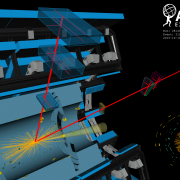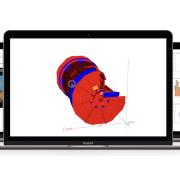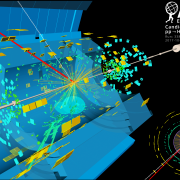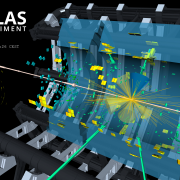Access to Collaboration Site and Physics Results
ATLAS Briefings

ATLAS measures Higgs boson coupling to top quark in diphoton channel with full Run 2 dataset
– At the Rencontres de Moriond (La Thuile, Italy), the ATLAS Collaboration presented an updated measurement of ttH production in the diphoton channel. The result examines the full Run 2 dataset – 139 fb-1 collected between 2015 and 2018 – to observe ttH production in a single channel with a significance of 4.9 standard deviations.Read more →
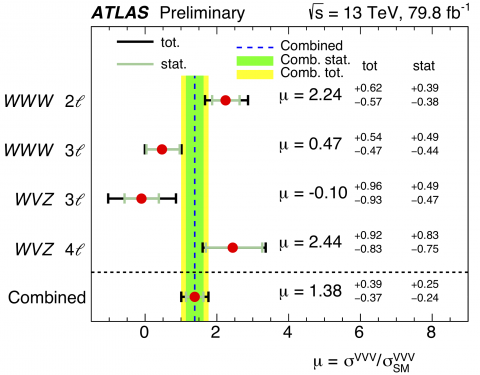
ATLAS finds evidence of three massive vector boson production
– Today, at the Rencontres de Moriond conference (La Thuile, Italy), the ATLAS collaboration released evidence for the simultaneous production of three W or Z bosons in proton–proton collisions at the Large Hadron Collider (LHC). The W and Z bosons are the mediator particles of the weak force – one of the four known fundamental forces – which is responsible for the phenomenon of radioactivity as well as an essential ingredient to our Sun's thermonuclear process.Read more →
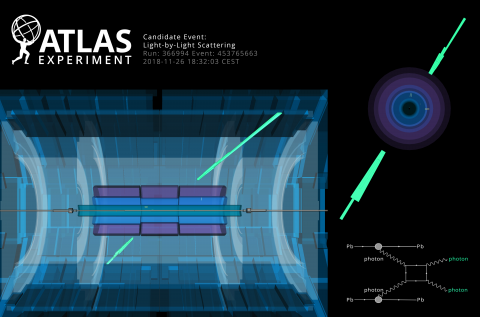
ATLAS observes light scattering off light
– Light-by-light scattering is a very rare phenomenon in which two photons – particles of light – interact, producing again a pair of photons. The ATLAS Collaboration has reported the observation of light-by-light scattering with a significance beyond 8 standard deviations.Read more →
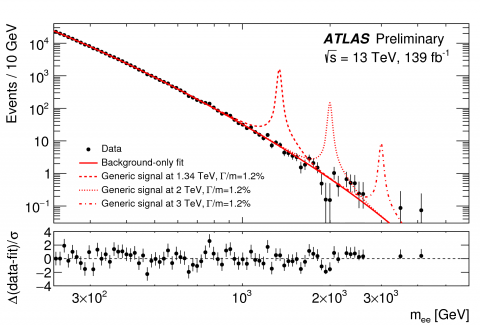
First ATLAS result with full Run 2 dataset: a search for new heavy particles
– Could a Grand Unified Theory resolve the remaining mysteries of the Standard Model? If verified, it would provide an elegant description of the unification of SM forces at very high energies, and might even explain the existence of dark matter and neutrino masses. ATLAS physicists are searching for evidence of new heavy particles predicted by such theories, including a neutral Z’ gauge boson.Read more →

Producing four top quarks at once to explore the unknown
– For several decades, particle physicists having been trying to better understand Nature at the smallest distances by colliding particles at the highest energies. While the Standard Model of particle physics has successfully explained most of the results that have arisen from experiments, many phenomena remain baffling. Thus, new particles, forces or more general concepts must exist and – if the history of particle physics is any indication – they could well be revealed at the high-energy frontier.Read more →

New ATLAS result of ultra-rare B-meson decay to muon pair
– The study of hadrons – particles that combine together quarks to form mesons or baryons – is a vital part of the ATLAS physics programme. Their analysis has not only perfected our understanding of the Standard Model, it has also provided excellent opportunities for discovery. On 20 September 2018, at the International Workshop on the CKM Unitarity Triangle (CKM 2018), ATLAS revealed the most stringent experimental constraint of the very rare decay of the B0 meson into two muons (μ).Read more →

ATLAS searches for double Higgs production
– The Brout-Englert-Higgs (BEH) mechanism is at the core of the Standard Model, the theory that describes the fundamental constituents of matter and their interactions. It introduces a new field, the Higgs field, through which the weak bosons (W and Z) become massive while the photon remains massless. The excitation of this field is a physical particle, the Higgs boson, which was discovered by the ATLAS and CMS collaborations in 2012.Read more →
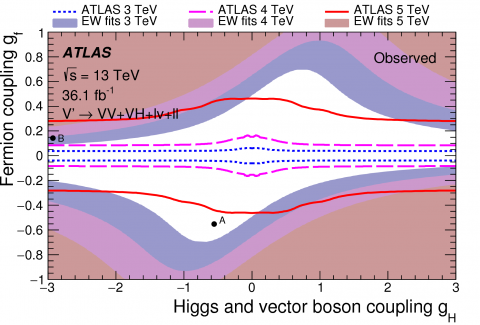
Stronger together: combining searches for new heavy resonances
– While the Standard Model has proven tremendously successful, much experimental evidence points to it not being a complete description of our universe. The search for “new physics” is therefore an important component of the ATLAS experimental programme, where a number of analyses are looking for signs of new heavy particles decaying to different final states. Though these searches have not yet found a significant signal, they have allowed physicists to place stringent constraints on different new physics scenarios. These can be further tightened by combining different analysis channels and approaches.Read more →
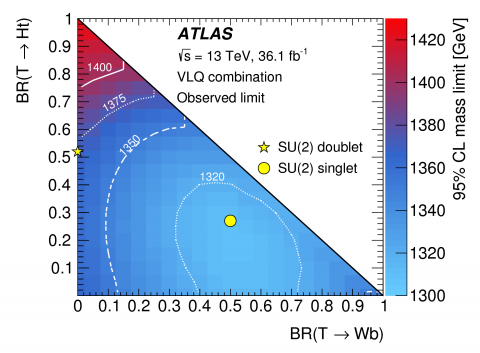
Could a new type of quark fix the “unnaturalness” of the Standard Model?
– While the discovery of the Higgs boson at the Large Hadron Collider (LHC) in 2012 confirmed many Standard Model predictions, it has raised as many questions as it has answered. For example, interactions at the quantum level between the Higgs boson and the top quark ought to lead to a huge Higgs boson mass, possibly as large as the Planck mass (>1018 GeV). So why is it only 125 GeV? Is there a mechanism at play to cancel these large quantum corrections caused by the top quark (t)? Finding a way to explain the lightness of the Higgs boson is one of the top (no pun intended) questions in particle physics.Read more →
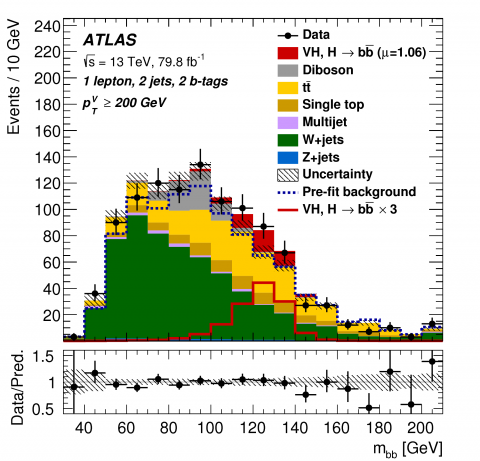
Higgs boson observed decaying to b quarks – at last!
– Today, at the 2018 International Conference on High Energy Physics in Seoul, the ATLAS experiment reported a preliminary result establishing the observation of the Higgs boson decaying into pairs of b quarks, furthermore at a rate consistent with the Standard Model prediction.Read more →




